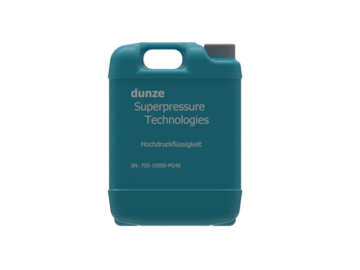About the product
The pressure-transmitting medium will usually be a suitable liquid, but in some cases it will also be a gas. Most oils solidify at ambient temperatures above around 2,500 bar and are then unusable as a pressure-transmitting medium. The solidification point can, however, be shifted to higher pressure values by reducing the viscosity, for example by adding petroleum. Water from 20 ° C to 25 ° C is still solid under 9,000 bar to 10,000 bar. At 10 ° C even at 7,500 bar. A high pressure liquid mixture of glycol, water and a rust inhibitor is often used. There are also a number of synthetic fluids on the market which, as a rule, have to be mixed with petroleum or a similar medium for pressures above 7,000 bar. Inert gases can be highly compressed without restrictions. When using oxygen, due to the high risk of explosion when coming into contact with oils, the highest precautionary measures must be taken. The same applies to the use of air and oxygen. When designing a gas system, it is important to know that the compressibility of the gas decreases sharply with increasing pressure. Liquid-like densities are achieved at room temperature even at pressures from 1,000 bar.
We offer you a range of high pressure media for your application.


